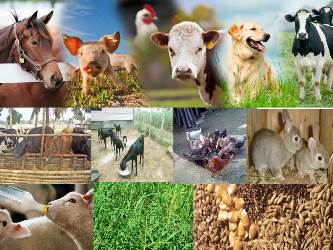



Received: 28-Nov-2022, Manuscript No. GJASLPAB-22-84096; Editor assigned: 02-Dec-2022, Pre QC No. GJASLPAB-22-84096 (PQ); Reviewed: 16-Dec-2022, QC No. GJASLPAB-22-84096; Revised: 23-Dec-2022, Manuscript No. GJASLPAB-22-84096 (R); Published: 30-Dec-2022, DOI: 10.35841/2408-5499.22.10.173
The study of animal behaviour is becoming more governed by ethical laws and regulations, just like other fields of animal science. Because misusing animals is likely to undermine science itself, sensible and educated legislation is to be applauded on moral grounds as well. However, it is clear that one area of animal science that which is concerned with utilitarian and economic interests taking place in regulated laboratory contexts is the source of a significant amount of the momentum and direction in the regulation discussion. This is maintained by an overemphasis on prospective health advantages as the main argument for animal science among a sceptical audience. Such prejudice runs the danger of having negative effects on other areas of animal science and is unlikely to be in the best interests of animal welfare from a scientific standpoint. I go over some of the issues raised by this and make the case that studying animal behaviour has a particularly significant role to play in both the advancement of the field of animal welfare science and the public discussion surrounding the regulation of animal science in general.
Any animal science that has an effect on the animals involved raises ethical questions in its aftermath. But it's important to distinguish between two quite separate justifications for utilising animals. The first, which incorporates a variety of utilitarian research practises (e.g., Bateson, 1986, Bateson, 2005, Singer, 1990, Reiss, 1993), uses animals as resources and includes investigations for toxicological, medicinal, consumer, and other concomitant goals.
There is no agreement on what welfare in other animals actually entails or how it should be measured.As several authors have pointed out, traditional concepts and measures of welfare have relied on a variety of essentially anthropomorphic criteria that more closely resemble how we imagine ourselves to feel in the animal's position.
Even though evolutionarily salient welfare ought to influence animal welfare policy in all cases, it obviously does not. One reason for this, I contend, is that animal welfare policy and regulation in the field of animal science is largely influenced by the aforementioned laboratory utilitarian interests. It is simple to understand why this should be the case. Many experts believe that the best argument in favour of animal research in the public sphere is the potential for medical benefits for people.
Organismal animal biology, as recognised by ecologists, zoologists, and evolutionary biologists, is currently a negligible voice in the discussion over the regulation of animal research. It will find itself pushed into an evertighter corner in terms of its freedom to function if it does not become louder and participate much more actively in the media, political dialogues, and national and international forums that drive these problems.
The production of commercial poultry is a significant concern worldwide. In order to meet the market's demand for broilers in just six weeks and the world's desire for protein, laying hen production has taken off. The most significant branch of animal agriculture in terms of animal welfare is poultry. In the traditional production method, 4-6 hens are raised in a cage in climate-controlled homes. Chicks from laying hens are raised on soiled ground.
The majority of the red meat and milk consumed by humans are produced by domesticated large (cattle, camel) and small (sheep, goat) ruminants. These animals are raised worldwide since red meat and milk are consumed everywhere (FAO, 2013).These animals were living freely and producing enough milk to nourish their young before they were domesticated, fact that they are currently kept in captivity and compelled to conform to what their genetic make-up permits with good management and feeding techniques.
Animal welfare, which is defined as creating an environment where animals can exhibit all of their natural behaviours in nature, has been a significant issue in the production of animals.
Due to the expanding human population worldwide and the increased need for animal-based protein as a result of rising consumer spending power, animal production must become more constrained and concentrated.